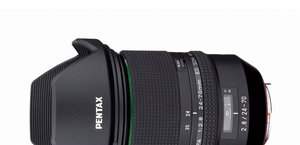Viltrox AF 16 mm f/1.8
4. Image resolution
Let's check how the Viltrox AF 16 mm f/1.8 compares here – its results in the frame centre, on the edge of the APS-C sensor and on the edge of full frame frame presents a graph below.

In the frame centre everything is in perfect order. Already at the maximum relative aperture you deal with a value of over 48 lpmm, noticeably above the decency level. What's more, stopping down the aperture proves to be very effective, allowing you to improve the performance. By f/2.0 you get almost 52 lpmm, by f/2.8 this value increases to over 70 lpmm and the highest value, amounting to 74.2 lpmm, is achieved by f/4.0.
Please Support UsIf you enjoy our reviews and articles, and you want us to continue our work please, support our website by donating through PayPal. The funds are going to be used for paying our editorial team, renting servers, and equipping our testing studio; only that way we will be able to continue providing you interesting content for free. |
- - - - - - - - - - - - - - - - - - - - - - - - - - - - - - - - - - - - - - - - - - - - - - - -
What about a comparison with twice more expensive Sony FE 16 mm f/1.8 G? Let's glance at a graph below.

As you see, despite its small dimensions the Sony is able to offer you better resolution and it does so at every aperture. The differences are perhaps not that huge but they land safely above the margin of error. You can notice them in real life photos especially near the maximum relative aperture.
When it comes to the edge of the frame I thought that significantly bigger Viltrox would be able to compete with its more expensive but smaller rival. Unfortunately it was not the case – once again the Viltrox is defeated by the Sony.
On the edge of the APS-C sensor the resolution by f/1.8 and f/2.0 apertures lands a tad below the decency level and if you want to achieve it you have to stop the lens down to about f/2.2. In case of full frame the stopping down has to be even more significant, reaching as much as f/2.8. The best results on the edge of the frame you can observe near f/5.6 where you deal with a really good level, getting to 55 lpmm. To sum up you can say that in the resolution category the tested Vitrox is defeated by the two times more expensive Sony. Still, the performance of the cheaper lens remain completely acceptable and allow us to assess it very positively indeed.
At the end of this chapter, traditionally, we present crops taken from photos of our resolution testing chart, saved as JPEG files along with RAW files we used for our analysis
| A7R IIIa, JPEG, 16 mm, f/1.8 |
 |
| A7R IIIa, JPEG, 16 mm, f/4.0 |
 |






